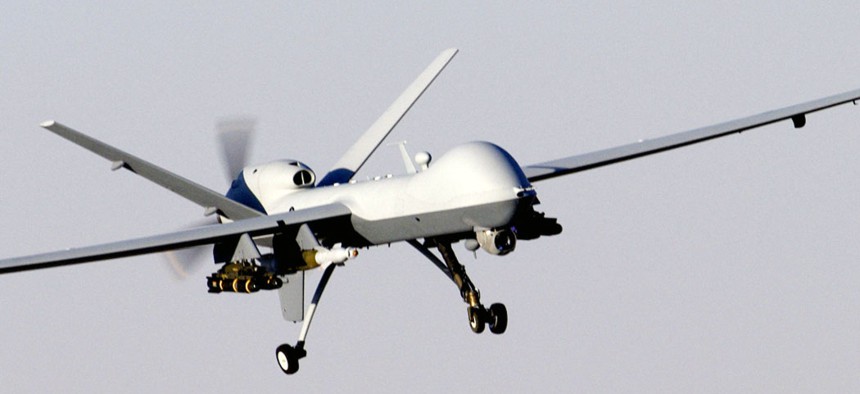Air Force is looking for resilient autonomous systems
The service wants to develop systems that can operate contested spectrum environments and learn from prior experience.
In anticipation of future conflicts taking place in contested communications environments, the Air Force is looking for robust autonomous systems that can adapt on their own to operate effectively in hostile environments despite disturbances.
The hostile environments are known in military parlance as anti-access/area denial (A2/AD), and the military is expecting to encounter this more often with the shift from counterterrorism operations in the Middle East to the Pacific, where what it calls “peer actors” such as Russia and China have the ability to disrupt transmissions in the electromagnetic spectrum.
Specific capabilities the Air Force mentions in a presolicitation include:
- Robustness. Current automated solutions are too brittle and inflexible to handle both dynamic and novel situations.
- Autonomy. Within contested domains, platforms must make informed decisions based on observations when communications are denied.
- The ability to deal with intelligent adversaries, who are constantly trying to counter friendly strategies.
“We’re already there in terms of some of our efforts in the counterterrorism realm,” Lt Gen Robert Otto, deputy chief of staff for Intelligence, Surveillance and Reconnaissance with the Air Force, said at a recent AFCEA NOVA concerning human-machine teaming and the need to harness big data in ISR. “Of course, that’s been the focus over the last 10 years or so, but we have a lot of work to do in terms of the contested scenarios that we can expect.”
With regard to autonomy, the project will focus on activities related to machine intelligence that can operate without a human in the loop.
Additional technological areas that could enable resilient autonomous solutions include:
- Distributed planning and constraint optimization.
- Multi-agent coordination.
- Distributed information management.
- Representation and feature learning.
- Reinforcement learning.
- Transfer learning.
- Case-based reasoning.
- Game theory and opponent modeling.
The Air Force wants to effectively plan, coordinate and control a finite number of heterogeneous autonomous unmanned aerial systems to achieve pre-specified ISR mission objectives. The challenge then, is that adversaries will be aware of intended operations within defenses and thus will employ electronic warfare and integrated air defenses to disrupt communications and capabilities. Technologies must provide effective command and control of at least 100 fully autonomous assets within intermittent and degraded communications environments, as well as prove capable of learning from prior experiences.
In order to assess the capabilities of technologies presented in A2/AD environments, solutions will participate in simulations in which opposing forces, known as red teams developed by the Air Force and not shared with contractors ahead of time, will attempt to disrupt the specific intelligence, surveillance and reconnaissance missions assigned to blue or friendly teams over a specific area within a 72-hour window.
The Air Force is planning a four-year project with white papers accepted during each the next four years. The first round of white papers are due March 30, 2016.





